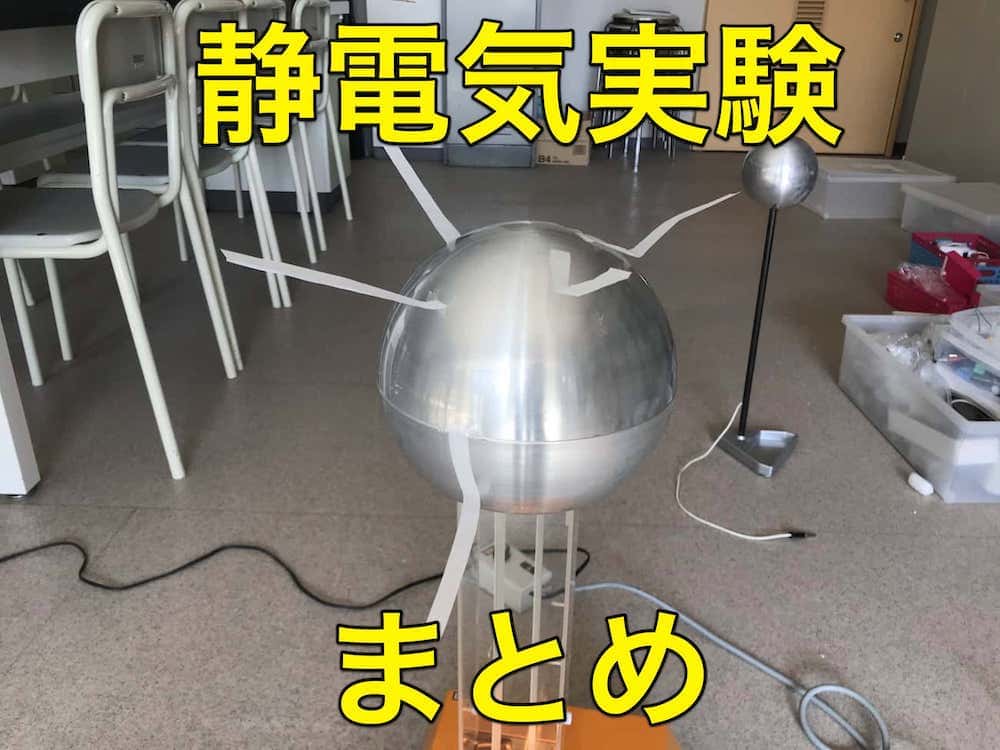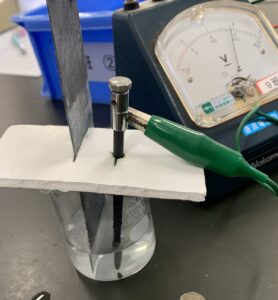Go Beyond Pikachu! Discover the Secrets of Static Electricity and Witness 10,000-Volt Sparks with a Leyden Jar!
I’m Ken Kuwako, your Science Trainer. Every day is an experiment!
Have you ever reached for a doorknob on a dry winter day and felt that sudden, painful “ZAP!”? That tiny spark is actually a phenomenon called “electrical discharge,” where electricity jumps across the gap between your finger and the knob. What’s truly astonishing is that the voltage generated in that split second is far beyond what you might imagine.
The Power of Static Electricity is in the Ten-Thousands of Volts!
If there were a mere 1cm gap between your finger and the doorknob, the voltage required for a discharge to occur is an incredible approximately 30,000 Volts! Considering that the outlets in our homes provide 100V, that’s a staggering 300 times the voltage! This clearly illustrates the immense power of static electricity.
You might be wondering, “With such high voltage, why doesn’t it electrocute me?” The reason is that, although the voltage is high, the amount of “current” (amperage) flowing is minuscule, and it lasts for only an instant. It’s like a garden hose spraying water vigorously (high voltage), but if the total amount of water is only a cup (low current), it won’t cause much harm.
So, what if the discharge distance was around 3mm? In this case, the necessary voltage would be about 10,000 Volts. That’s still 100 times the voltage of a standard outlet! (As a side note, compared to Pikachu’s signature move, “Thunderbolt (100,000 Volts),” this is only about one-tenth of the energy. Gotta respect Pikachu!)
In this experiment, we safely generated and discharged this everyday 10,000-Volt static electricity and filmed the process. Please watch the video to witness the moment a tiny “lightning bolt” strikes!
Try This at Home! Observing 10,000-Volt Discharge
Let’s try to observe the discharge you saw in the video for yourself. For this, we will use a device called a “Leyden Jar.” This was invented in the 18th century and is the world’s first-ever device for “storing electricity” (a capacitor)!
What You’ll Need
Leyden Jar (for instructions on how to make one, click here), a pencil wrapped in aluminum foil, cellophane tape, a balloon, and a towel.
Instructions
Make a Leyden Jar (for instructions, click here).
Generate and store static electricity in the Leyden Jar using the balloon and towel. For storage instructions, please refer to this link. (Imagine you are collecting the electricity rubbed off by the balloon and trapping it inside the jar!)
Make a strip of aluminum foil and attach it to the pencil with tape.
Create a circuit by touching the aluminum foil on the pencil to both the inner and outer aluminum foil layers of the jar. Slowly, slowly bring it closer… and you will see a spark!
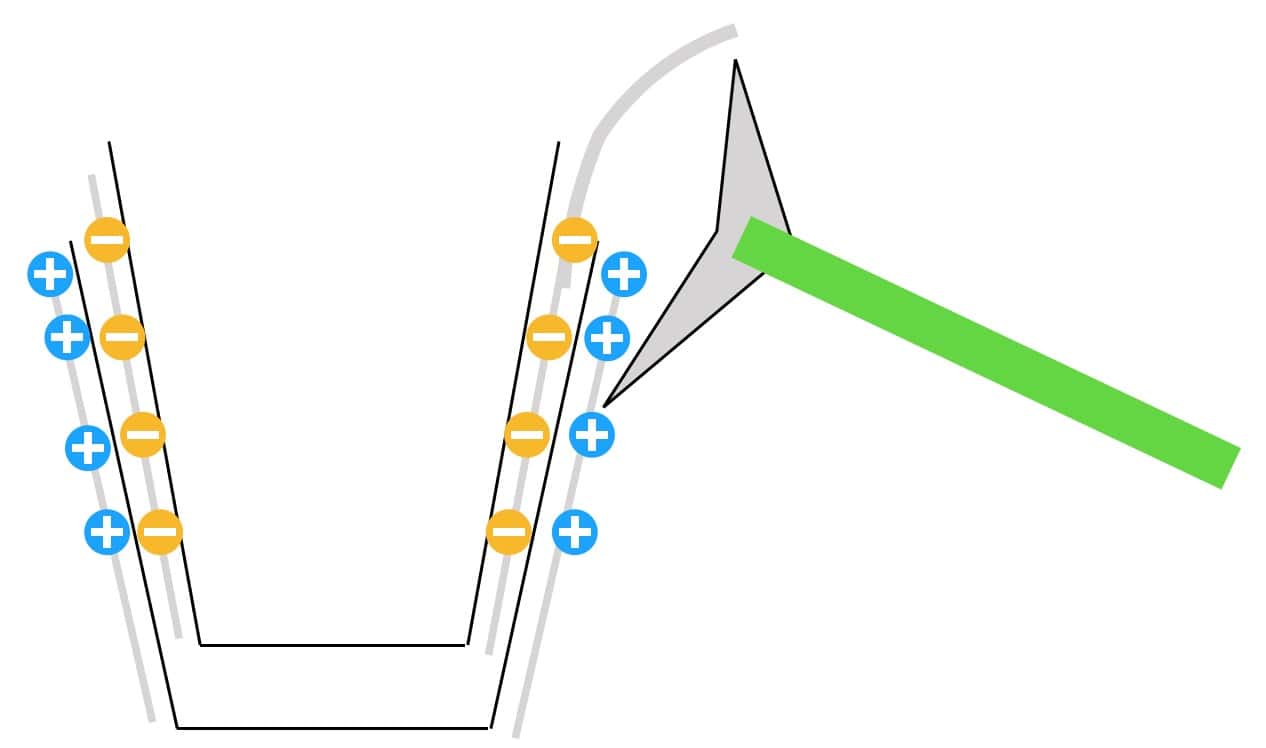
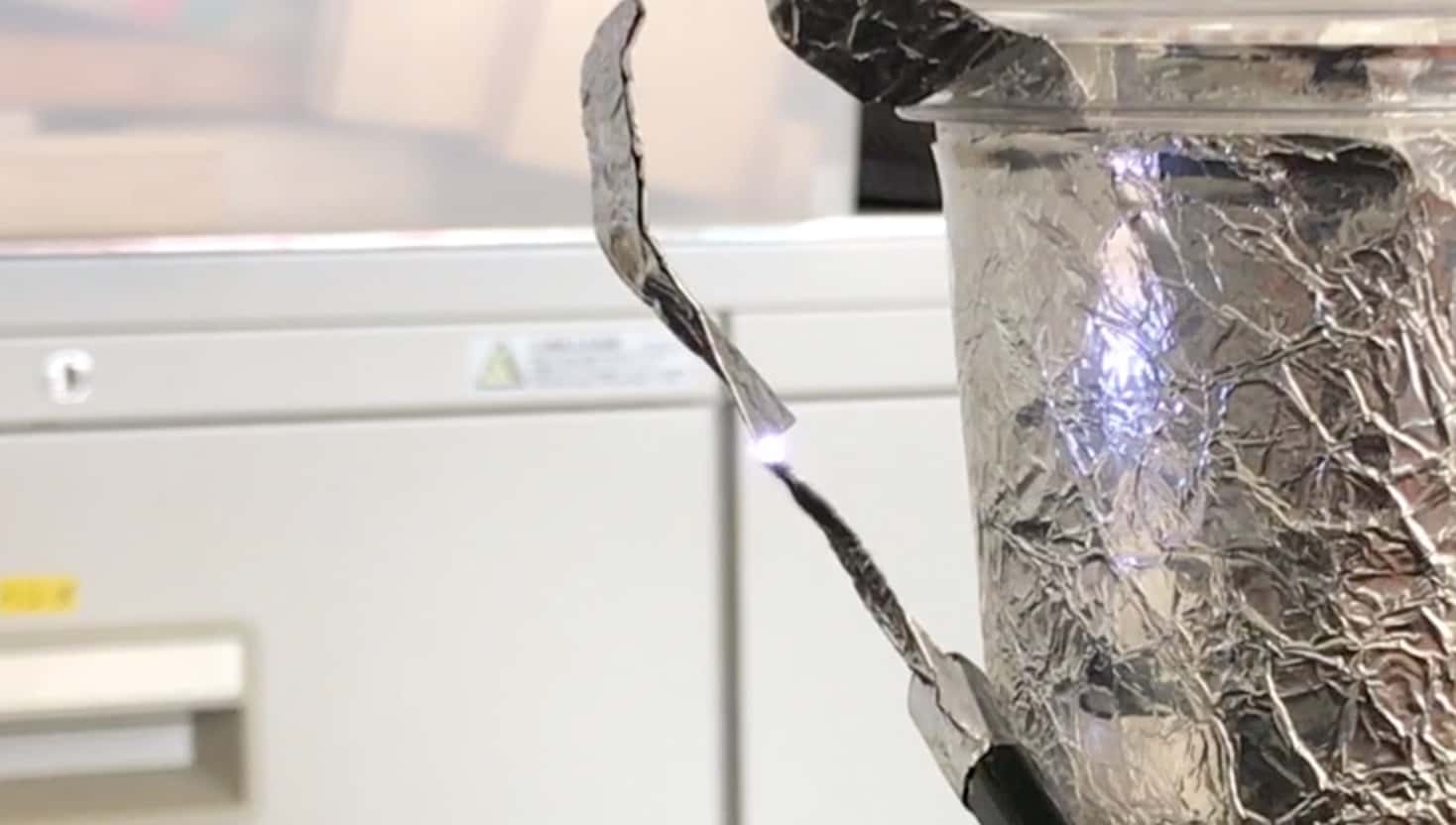
The Mechanism: Why Does Electricity Store and Glow?
The Leyden Jar has a structure like an “electrical sandwich,” with the two layers of aluminum foil (inner and outer) sandwiching the electric charge (electrons, which carry negative charge). The electrons collected by rubbing the balloon are continuously stored on the inside.
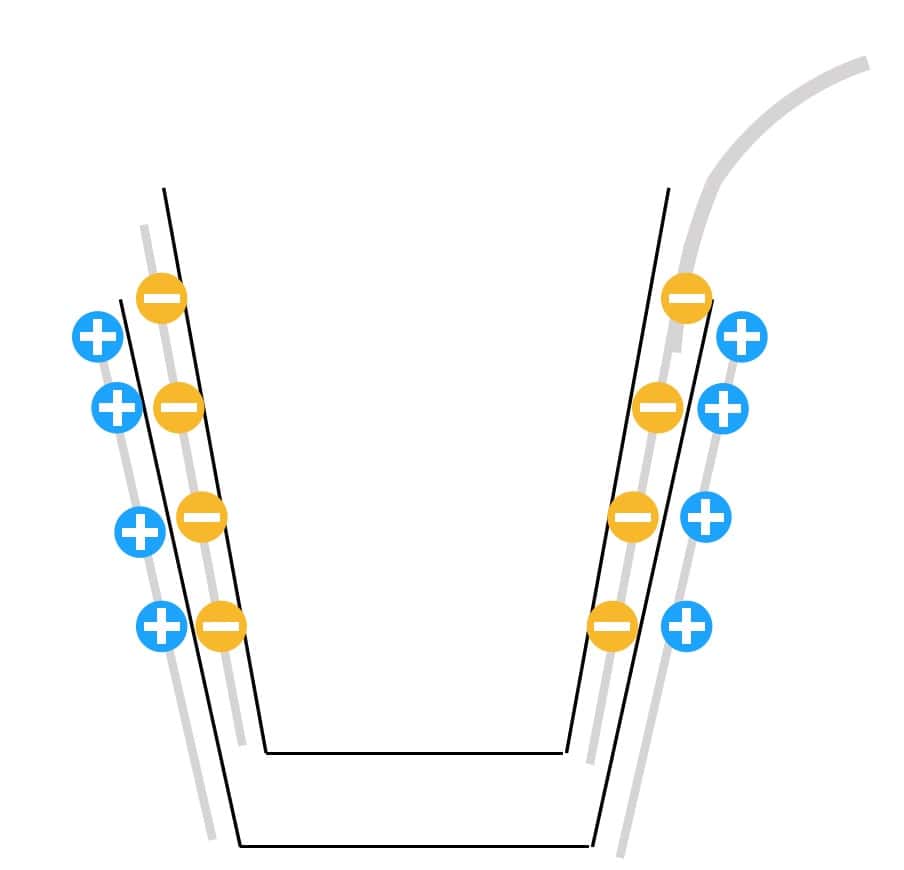
Store as much static electricity as possible, aiming for a state of about 10,000 Volts. When you use the aluminum foil on the pencil to connect the charged inner and outer foil layers, “corona discharge” occurs, and you see a bright flash.
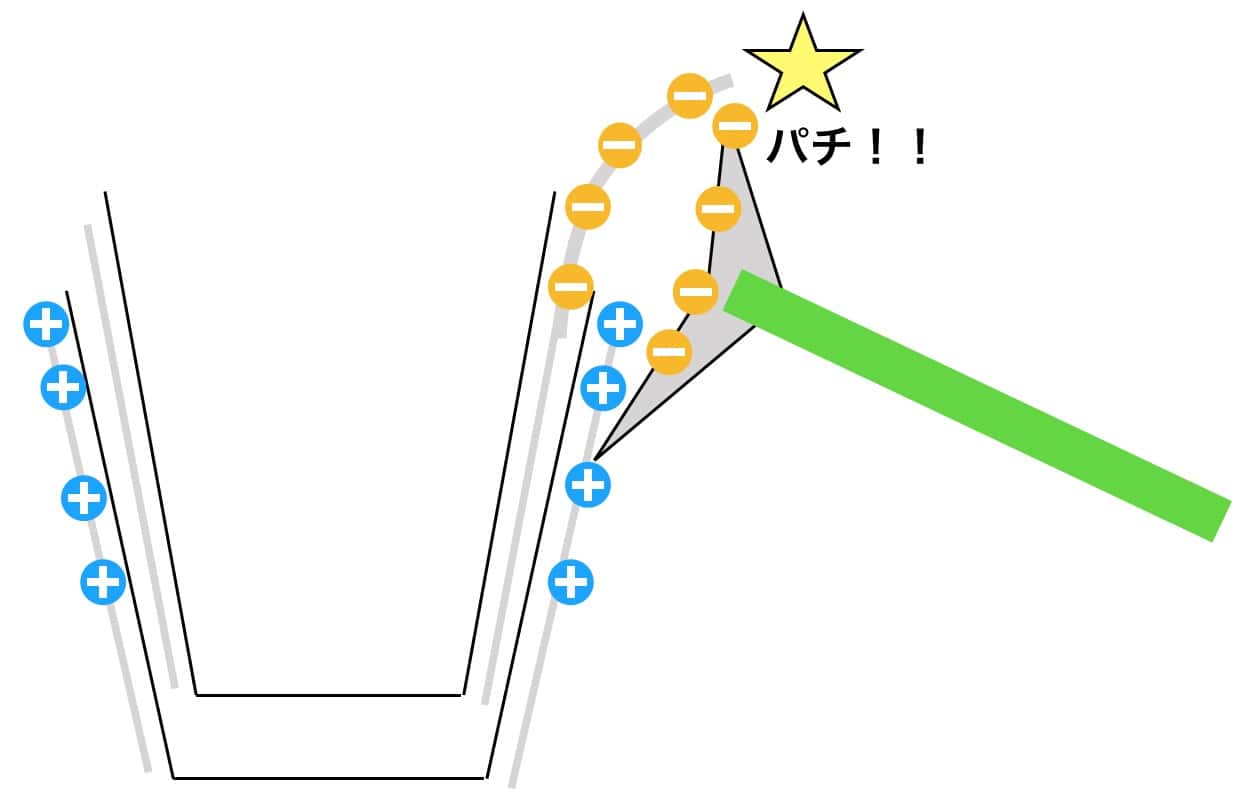
This happens because the high voltage (tens of thousands of volts) forces electrons to jump out into the air, forcefully “ionizing” the air, which normally doesn’t conduct electricity, and changing it into a conductive state. Once a path is formed, even more electrons rush in—a veritable “avalanche effect”—which is what we see as a strong light (the spark).
An Experiment Connected to the History of Science
The Leyden Jar, in fact, played a tremendously important role in the history of science. You can read about the historical background of the Leyden Jar here.
The Leyden Jar Opens the Door to More Fun Experiments!
The Leyden Jar can be used for a variety of fascinating experiments, including the “Hundred-Person Shock” (a classic science experiment where people hold hands to experience static electricity!). Some of these experiments have even been performed on TV shows with celebrities like Suzu Hirose, Ryohei Suzuki, Yasuko, Osada, and Matsuo from Chocolate Planet. In both the past and present, the power of electricity continues to surprise and delight people! Find out more here.
The “ZAP!” from a doorknob is, when viewed through a scientific lens, a tiny 10,000-volt lightning bolt. When you look with the eyes of science, everyday life is filled with wonder and surprise!

※ WARNING: Experiments using a static electricity generator (Van de Graaff generator) must always be performed under the supervision of a specialist. Please proceed with caution. For requests regarding static electricity experiments (e.g., science classes, TV supervision/appearances), please contact us here.
【Feature】Static Electricity Experiments You Won’t Be Able to Stop Doing!
Inquiries and Requests
Making the wonders and fun of science more accessible! We provide easy-to-understand summaries of fun science experiments you can do at home and tips for success. Feel free to browse and search around! ・About the operator, Ken Kuwako: Click here ・For various requests (writing, lectures, science classes, TV supervision/appearances, etc.): Click here ・Article updates are posted on X!
![]() We post experiment videos on the Science Topics Channel!
We post experiment videos on the Science Topics Channel!

